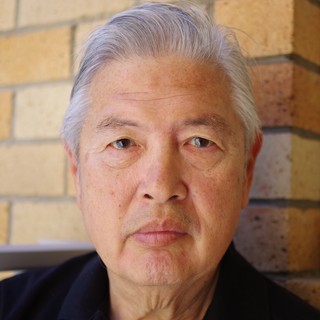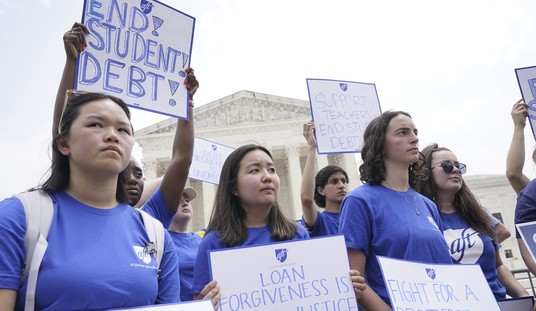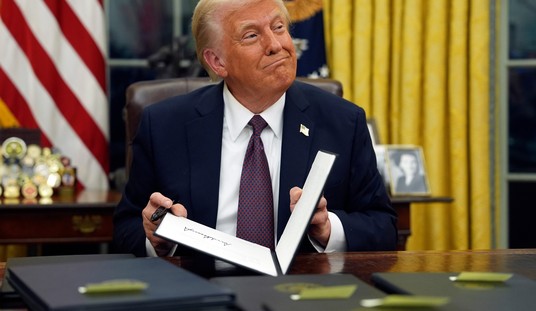The genocide in Sudan is a problem, according to the UN experts on the subject. Doubtless it is, but the relief agencies are at a loss over how to stop the death of hundreds of thousands. One of the commonsense places to begin looking for solutions is to examine what drove the fighting in the first place. It is widely acknowledged that the warring sides in the Sudan are fighting over money. The UAE wants gold. China wants its oil pipeline. Russia wants to vend its mercenary services. Arms merchants want to sell weapons to every side.
Why now? It is rarely appreciated that one of the defenses of the poor against assault is poverty. Third-world huts have no locks. The good news is since there's nothing worth stealing, no one attacks them. But ever since gold and oil were found in Sudan and aid flooded in, there's been plenty to steal and the genocide began.
Oil and mineral riches are the curse of Africa. Africans and Sudanese in particular are sitting on a pile of wealth without the human capital to either develop or defend it. Africa is like a storehouse of gold, diamonds, oil, and fertile land guarded by a sentry slumped at the door. That situation attracts the bandidos.
One of the problems is that the UN relief itself is a magnet for armed bands. WFP (World Food Programme) lost 4,500 metric tons of food to looting in 2022 in South Sudan. The RSF, controlling Darfur/Kordofan, routinely loots WFP/UN warehouses and convoys in its territories, reselling food on markets or using it for fighters/recruits. There are numerous articles documenting this in the press. For example, “the United Nations World Food Programme (WFP) strongly condemns the looting of food supplies from its premises in Gezira State last weekend after elements of Sudan’s paramilitary Rapid Support Forces broke into the warehouse and office, following their takeover of Wad Medani.” The same food that feeds the refugees in Sudan supplies those who extort and slaughter them. In a very real sense the UN provides the logistics for genocide the combatants might not be able to organize for themselves.
It was much the same in Gaza. “The United Nations has admitted that most of the aid it sent into Gaza after May 2025 was diverted by armed actors and hungry Gazans.” It happened in Syria. “Widespread looting of aid agency warehouses took place as rebel forces fought to topple the Syrian regime. Aid convoys also couldn't move safely, Kenneth Crossley, country director in Syria for the World Food Program, told CBC News.” In fact a sufficiently large inflow of loose money can actually destabilize an otherwise functioning country. The 2010 quake in Haiti triggered an unprecedented aid tsunami equivalent to 400% of of its normal annual revenue. An instant NGO republic soaked up 94% of this aid, bypassing the government due to corruption fears—but almost nothing reached the actual Haitian. The Guardian wrote:
We found that about 94% of humanitarian funding went to donors' own civilian and military entities, UN agencies, international NGOs and private contractors… Yet this is where the trail goes cold – you can look at procurement databases to track primary contract recipients, but it is almost impossible to track the money further to identify the final recipients and the outcomes of projects.
60% of US-disbursed recovery funding is "not specified" (pdf), as is 67% of Canada's aid to Haiti (pdf). Data for the European commission shows that 67% of humanitarian funding and 43% of recovery funding is to "other international NGOs" (pdf).
And this was in a country without an ongoing civil war (Haiti has been taken over by gangs now). What must it be like in Sudan, where gunmen can take what they like by force?
There are ways to feed refugees without supplying the “armed actors,” but they all involve skills the UN doesn't have, can't bring themselves to learn or won't be allowed to acquire. The problem is largely one of self-limitation by the system. Humanitarian agencies cannot stop armed men who seize their goods at gunpoint. What they can do is wring their hands or make allowance for theft as the “cost of doing business”.
They can try to screen out illegitimate actors by, for example, allowing only women and elderly into relief queues to block out the military aged armed actors. But again examples like Gaza show how difficult this is. The strong force their way to the front of the line and have first crack at the rations. Even in the West, asylum seekers are disproportionately able bodied men. One advocate for migrants in the West explained this strange fact by arguing that “a lot of women and children die on their way to Europe.” That should be even truer in the blood soaked sands of Sudan. Darwin will always prevail. Absent civilization it is the survival of the fittest.
Even if armed men could somehow be excluded from relief centers the bandits would attack the aid convoys themselves unless they are escorted. Who will escort them? Ultimately preventing the West from incidentally supplying the genocidaires requires security humanitarian agencies are not structured to provide. So the world "leaks" most aid to the gunmen, hoping some food gets through to the starving civilians. The deadly math means that the American taxpayer could actually be most responsible for accidentally funding the genocide in Sudan. “According to data from the U.N., USAID provided 44% of the world’s humanitarian funding in 2024 for Sudan.” Some part of that is feeding the RSF.
If there’s any lesson to be learned from the woeful catalog of recent genocides it is that “institutional capacity” on the ground is often more important than the absolute amount of aid sent to a suffering region. It is "institutional capacity," which determines whether someone – or some society – finding a suitcase of money in the street, invests it in a business or goes on a binge of drugs, hookers and mayhem. It is the same thing writ large which determines whether aid is used to save or to kill.
The vast majority of civilians dying in the ongoing massacres in Darfur, Sudan, are non-Arab ethnic groups such as the Fur, Masalit, and Zaghawa. These groups are predominantly Muslim. Once they grew millet, sorghum, groundnuts, sesame, okra, watermelon, tomatoes in wadis, riverbeds on sloping, nearly flat parts of deserts. They herded goats, sheep, cattle, donkeys and camels. They lived poor lives, yet this simplicity protected them from depredation.
The seasons came and went. The cycle of nature repeated with little change. Then one day riches were discovered in the land they lived in for centuries. The Arab raiders, so long absent, came followed by the Western humanitarians and the Sudan was never the same again.










